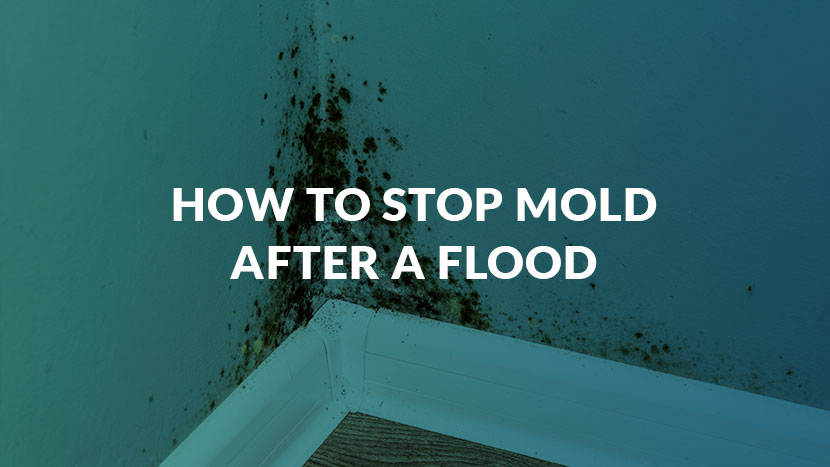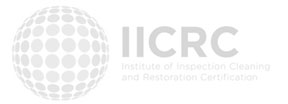
When a flood strikes, the aftermath can be devastating. Beyond the immediate damage to your property and belongings, there’s a silent threat that can linger long after the waters recede: mold. Mold is more than an unsightly nuisance; it’s a severe health hazard that can compromise the structural integrity of your home.
This persistent fungus thrives in damp environments, making flood-damaged homes the perfect breeding ground. CLEAR Restoration is here to help you learn how to stop mold after a flood and prevention tips to ensure the safety and integrity of your home.
Are you dealing with a mold infestation after your house flooded? The mold abatement experts at CLEAR Restoration can help. We do more than teach you how to stop mold after a flood; we eliminate mold to protect your home and health and restore your peace of mind. When you need expert mold abatement services, contact us at 225-245-3575.
[Related: Mold Remediation After a Flood]
How to Stop Mold After a Flood: Why You Need to Act Quickly
When it comes to stopping mold after a flood, time is of the essence. Mold spores are always present in the air, and they only need moisture and organic material to start growing. Within 24 to 48 hours of water exposure, mold can begin to colonize damp surfaces. This narrow window emphasizes the need for immediate action to mitigate the risk of mold infestation.
Delaying the cleanup and drying process can significantly increase the likelihood of mold growth and the extent of the damage. The longer water sits, the more it seeps into porous materials, creating an ideal environment for mold to thrive. By acting quickly, you can minimize and stop mold after a flood and reduce the overall cost and effort required for remediation.
Stop Mold After a Flood by Removing Standing Water
The first critical step in preventing and stopping mold after a flood is to remove standing water as quickly as possible. Depending on the extent of the flooding, you may need to employ various methods, such as using wet/dry vacuums for smaller areas, submersible pumps for larger volumes, or even professional water removal services for extensive flooding.
It’s essential to have the right equipment on hand, including wet/dry vacuums, submersible pumps, extension cords, mops, buckets, and protective gear like rubber boots, gloves, and goggles.
Dry Out the Affected Area to Stop Mold After a Flood
Once the standing water has been removed, the next crucial step to stopping mold after a flood is to dry out the affected area thoroughly. This process involves using high-powered fans to circulate air and promote evaporation, along with dehumidifiers to remove excess moisture from the air. Proper ventilation is key to preventing mold growth, so be sure to open windows and doors to allow fresh air to flow through the space. For larger areas or severe flooding, consider renting industrial-grade air movers to expedite the drying process.
As you work to remove water and dry out the area, it’s important to identify and remove materials that are beyond repair or pose a high risk for mold growth. This may include:
- Carpets and padding soaked for more than 24 hours
- Upholstered furniture that has absorbed water
- Saturated drywall and insulation
- Books, papers, and other porous materials that can’t be thoroughly dried
- Food items that have come into contact with floodwater
When disposing of these items, be sure to bag and seal them to prevent mold spores from spreading during removal. Remember that the entire process of water removal and drying can take several days, depending on the extent of the damage and local climate conditions. Throughout this process, prioritize safety, especially when dealing with electrical equipment in wet environments. If you’re unsure about handling any aspect of the water removal or drying process safely to stop mold after a flood, it’s best to contact professionals for assistance.
How to Stop Mold After a Flood: Clean, Disinfect, and Monitor Humidity
After removing wet materials, thorough cleaning and disinfection of all surfaces is crucial to stopping mold after a flood. Use a mixture of water and detergent for general cleaning, followed by a disinfecting solution of 1 cup of bleach per gallon of water. For wooden surfaces, consider a borate-based cleaner to prevent mold and wood rot. When cleaning, start from the top and work your way down, scrubbing surfaces vigorously to remove all visible dirt and potential mold. Pay special attention to corners, crevices, and hidden areas where mold can easily grow. Always wear protective gear, including gloves, masks, and eye protection, during the cleaning process.
Once the area is clean and dry, maintaining proper humidity levels is essential for preventing future mold growth. Keep indoor humidity below 60%, with an ideal range between 30% and 50% relative humidity. To monitor humidity levels effectively, use tools such as hygrometers, smart home sensors, or moisture meters. These devices can help you detect potential moisture issues before they lead to mold growth.
Remember that humidity levels can vary in different areas of your property, so regular monitoring throughout the space is important. By staying vigilant with humidity control, you can address any moisture issues promptly, maintain a mold-free environment, and stop mold after a flood.
How to Stop Mold After a Flood: Prevention Tips
Implementing preventive measures is crucial for avoiding future mold issues after a flood. Regular inspections should be a key part of your maintenance routine. Conduct thorough checks for signs of water damage or moisture accumulation, paying special attention to areas prone to dampness, such as basements, crawl spaces, and attics. Inspect roofs, windows, and plumbing systems for leaks or damage, and be alert for visible mold growth, musty odors, or water stains.
In addition to regular inspections, employing effective moisture control strategies is essential to stopping mold after a flood. Promptly fix any leaks, whether they’re from pipes, roofs, or windows. Ensure proper ventilation throughout your property, especially in high-humidity areas like kitchens and bathrooms, with exhaust fans and maintaining good airflow in attics and crawl spaces. Proper landscaping can also play a vital role in moisture control; grade the land around your property to direct water away from the foundation and keep gutters and downspouts clean and well-maintained.
Other important moisture control measures include:
- Using dehumidifiers in naturally damp areas like basements
- Avoiding carpeting in moisture-prone areas such as bathrooms or basements
- Ensuring proper insulation to prevent condensation on walls and windows
- Regularly cleaning and maintaining HVAC systems to control indoor humidity
By implementing these preventive measures and moisture control strategies, you can significantly reduce the risk of mold growth and maintain a healthier living environment.
[Related: The Difference Between Water Damage and Flood Damage]
Contact CLEAR Restoration for Expert Mold Abatement Services
The key to stopping mold after a flood lies in swift, decisive action. By addressing water damage immediately and thoroughly, you can lessen the risk of mold growth and protect your property and health. Remember that mold can start to grow within 24 to 48 hours of water exposure, so every moment counts.
Don’t let mold take control after a flood. Take action now to protect your property and health. If you’re facing water damage or suspect mold growth, don’t hesitate to reach out to the experts. Contact CLEAR Restoration today at 225-245-3575 for professional mold abatement and flood damage restoration.



